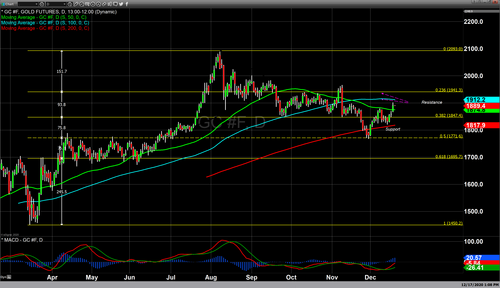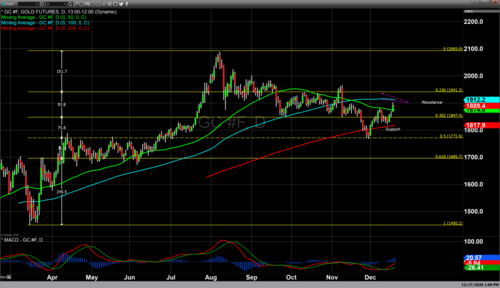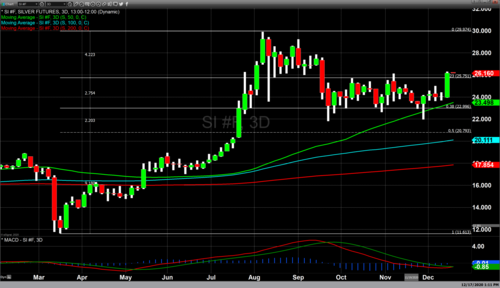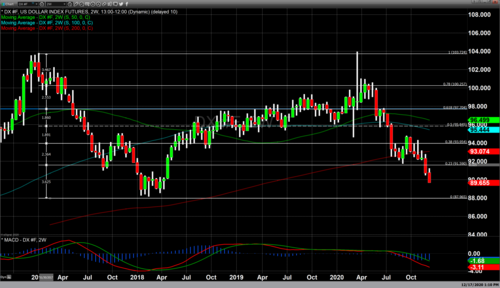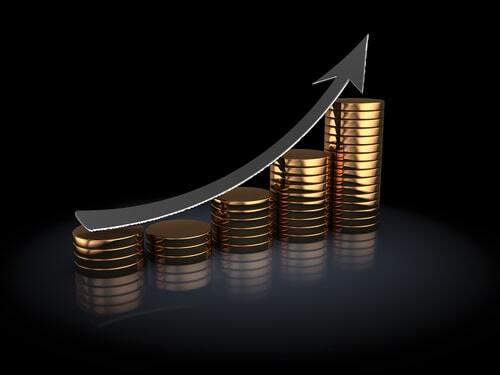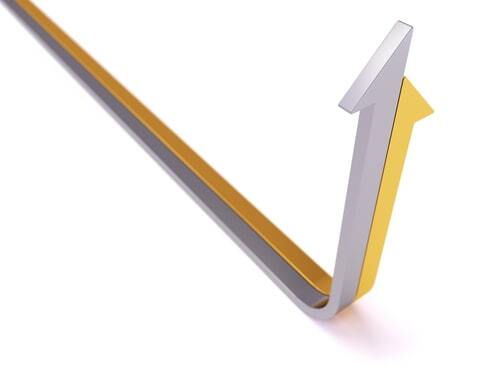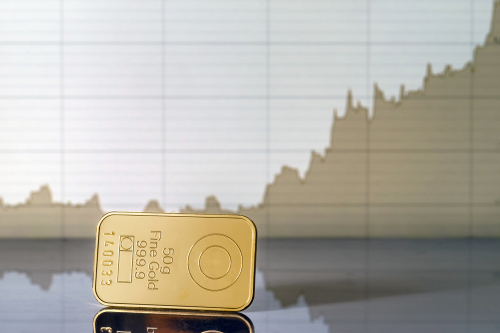Can 2020's last full week take gold price to $1,925?
Gold is facing strong resistance right at the $1,850 mark. Can it breach it and move to $1,925 an ounce next week? Analysts are not ruling it out, but everything seems to depend on the U.S. fiscal stimulus, which is still up in the air.
Gold is largely unchanged on the week, but the important thing is that the metal is not letting go of its previous long-time support of $1,850 an ounce just yet.
Seasonality will start to favor gold next week. Based on historical trading patterns, one of the best times for gold is from mid-December up to Valentine's Day, Walsh Trading co-director Sean Lusk told Kitco News.
"Seasonalities are going to start kicking in here sooner rather than later. The recent weakness you've seen here was due to long lengths, managed money, spec traders. They took some off the table. But we haven't violated any major level," Lusk said. "$1,880-$1,900 is still a key resistance for gold."
Right now, gold is managing to hold the $1,830 level, which means the metal is up 20% since the start of the year, said Lusk. This is impressive, considering that gold has been in a consolidation mode for the past few months.
Until year-end, gold is likely to grind higher, he noted. "It will be a slow process into the year-end as we head towards $1,850-$1,900."
The macro picture has not changed, Lusk added. "Until you get vaccine widely distributed, gold will still do well, especially with printing presses rolling again. Every time you print more of something, it is worth less. That's why the appeal for gold, silver, and cryptos," he said.
Record coronavirus deaths, stimulus, Brexit, Fed
There are five key drivers to keep an eye on next week that could significantly impact the gold market — record coronavirus deaths in the U.S., fiscal stimulus, Brexit chaos, the Federal Reserve monetary policy meeting, and macro data
The stimulus is still "up in the air," said Kitco Metals global trading director Peter Hug.
The contention between the Democrats and Republicans is around the issues of business liability and state aid.
"I am a little disappointed that when gold broke through $1,850, it didn't run towards my target of $1,925. But that call was on the back of the stimulus package being passed this week. And now it looks like it ran into trouble. They have until next Friday when they break for Christmas," Hug said.
Hug still sees a chance for $1,925 an ounce next week if gold can hold above $1,850 an ounce. On the downside, he does not foresee a move below $1,800 an ounce.
The pressure is building to get the $900 billion stimulus passed as coronavirus deaths are now reaching record highs on a daily basis. Thursday saw another 2,902 U.S. deaths being reported, a day after the country saw a record 3,253 people died. This pace is projected to continue until the end of winter, according to Reuters.
Final hours of Brexit negotiations over this weekend are also adding a layer of fear, which is working in favor of gold, noted Hug.
"This morning, you had support at the $1,825 level, and it bounced, then Boris Johnson announced that it is likely that Britain would leave the E.U. without a trade deal. That will create some financial issues between the U.K. and E.U. in the new year. This has already triggered some fear and was a catalyst for gold," Hug explained.
British Prime Minister Boris Johnson told reporters on Friday: "It's looking very, very likely we'll have to go for a solution that I think will be wonderful for the U.K., we'll be able to do exactly what we want from January 1, it will obviously be different from what we set out to achieve."
The current deadline for negotiations expires on Sunday, but economists are not ruling out an extension.
"There is a general sense that talks could stretch into next week," said ING developed market economist James Smith. "Talks reportedly remain stuck on the issue of the level playing field, and specifically what happens if either side decides to tighten up the likes of their labor/environmental standards in the future. Prime Minister Boris Johnson has publicly pushed back on the idea that the U.K. could be open to tariffs should the E.U. decide to unilaterally increase these standards in the future."
However, the biggest macro event in the U.S. next week will be the Federal Reserve monetary policy meeting on Wednesday.
"Given this situation, the Federal Reserve will retain a dovish bias and continue to emphasize the need for ongoing fiscal support," said ING chief international economist James Knightley. "Additional quantitative easing looks unlikely, but they could potentially focus more of their current purchases at the long end of the curve, which would flatten the yield curve. But given the 10Y is still below 1%, there seems little need to do it at this stage."
Hug also noted that the Fed will remain very accommodative and might stress the necessity of more fiscal stimulus.
Data to watch
Next week will be the last busy week for developed markets before the Christmas holidays set in, said ING economists.
On the docket are the N.Y. Empire State manufacturing index and industrial production on Tuesday, retail sales and the Federal Reserve meeting on Wednesday, and finally the building permits, housing starts, jobless claims, and the Philadelphia Fed manufacturing index on Thursday.
Analysts will be carefully watching the negative impact of rising coronavirus cases and additional lockdown measures being introduced across the U.S.
"The economic strains from the spike in Covid-19 are becoming increasingly apparent. There was already a loss of momentum in the U.S. November jobs report, but the latest initial claims data suggests the containment measures to try and protect healthcare systems are closing businesses which, in turn, are laying off staff," said Knightley. "We should be braced for more bad news on jobs given it is likely that the containment measures and business closures will spread to more and more states."
By Anna Golubova
For Kitco News
Kinesis Money
David





